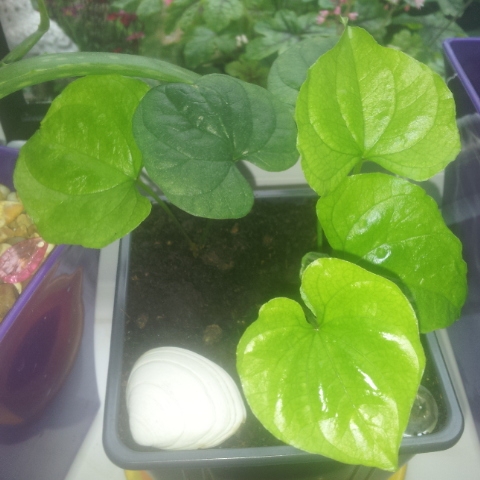
Dioscorea oppisitifolia
Cinnamon Vine
D. oppositifolia is a perennial, twining vine. Underground, it has a deep, persistent, root-like tuber up to 1 metre long that resprouts annually. Above ground, it has round, slender stems that twine spirally upwards, counterclockwise. It is a fast growing, twining vine that has escaped from cultivation and has the ability to rapidly invade pristine habitats. Caution is advised if planting this species in a garden!
Contributed by @micheybell
-
Full sun to partial shade
-
Occasional watering
-
Frost Hardy: 23F (-5°C)
-
Moist and free draining
Common name
Cinnamon Vine
Latin name
Dioscorea oppisitifolia
type
Perennial Vine
family
Dioscoreaceae
ph
5.0 - 7.5 Acid - Neutral
Plant & bloom calendar
-
Best time to plant
full grown dimensions
 2.00 M
20.00 M
2.00 M
20.00 M
Dioscorea oppisitifolia
D. oppositifolia is a perennial, twining vine. Underground, it has a deep, persistent, root-like tuber up to 1 metre long that resprouts annually. Above ground, it has round, slender stems that twine spirally upwards, counterclockwise. It is a fast growing, twining vine that has escaped from cultivation and has the ability to rapidly invade pristine habitats. Caution is advised if planting this species in a garden!
Propagation
From Late Winter TO Early Spring
The bulbils on the vines sprout and become new vines, twisting around each other to form a thick mat. These can be removed and planted. If the plant is cut to the ground, the tubers can survive for extended periods and send up new shoots later. These can also be divided to create new plants.
Planting
From Early Spring TO Early Spring
As this plant can take over other plants and trees, it is best planted in large containers to restrict the spread by tubers. It should however be planted in a moist but well drained soil, in sun or partial shade and be protected from temperatures below -5C. It prefers acid to neutral soil types.








